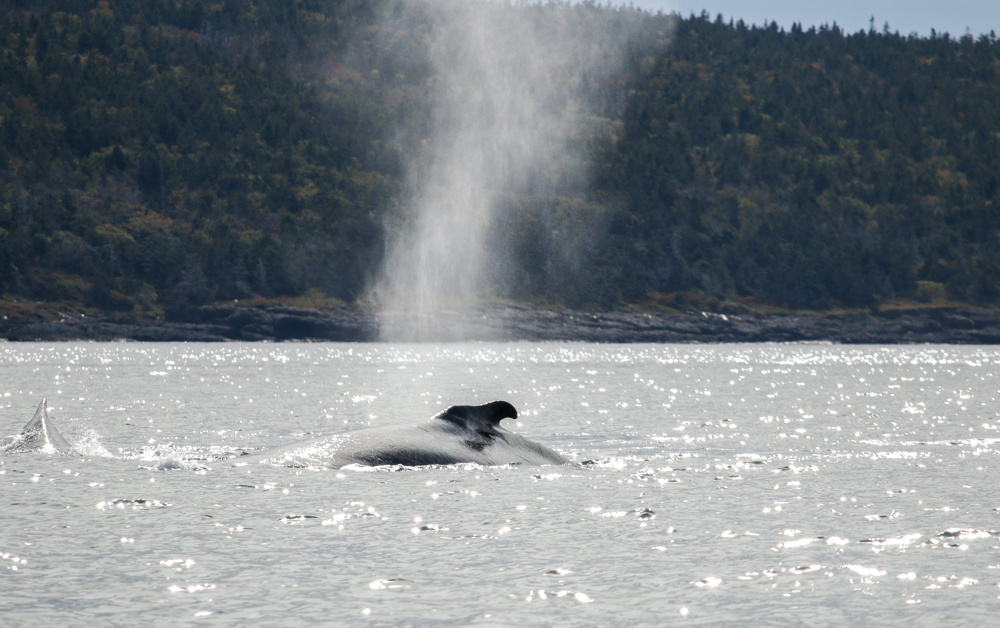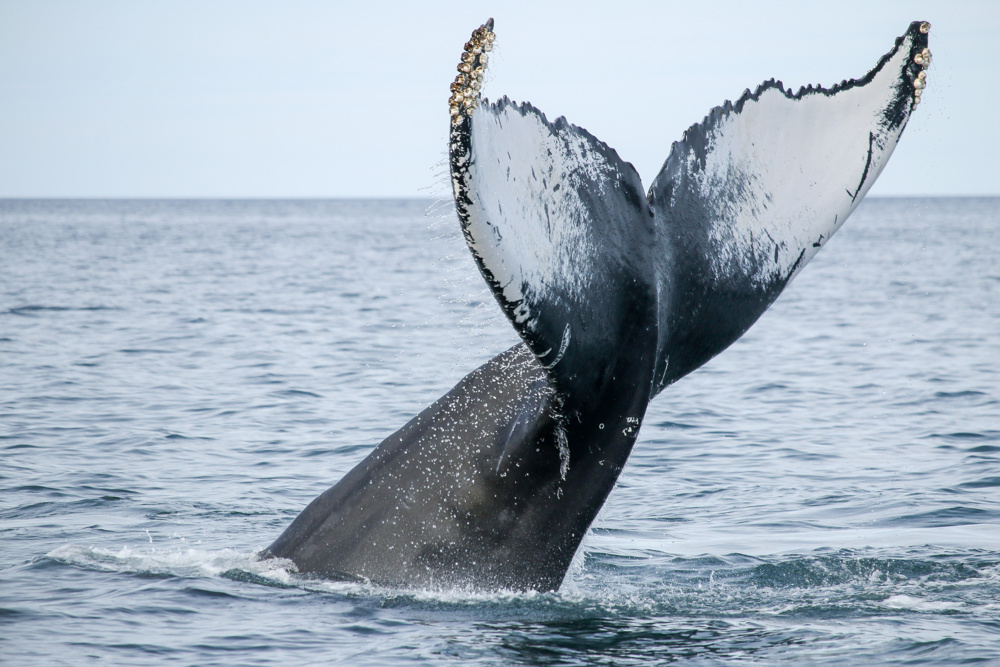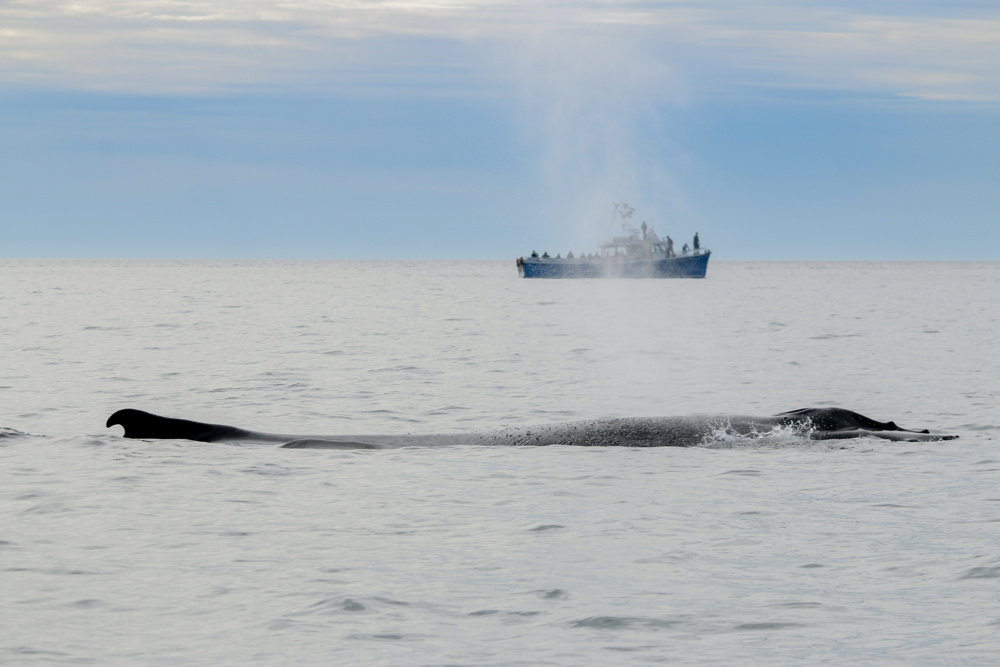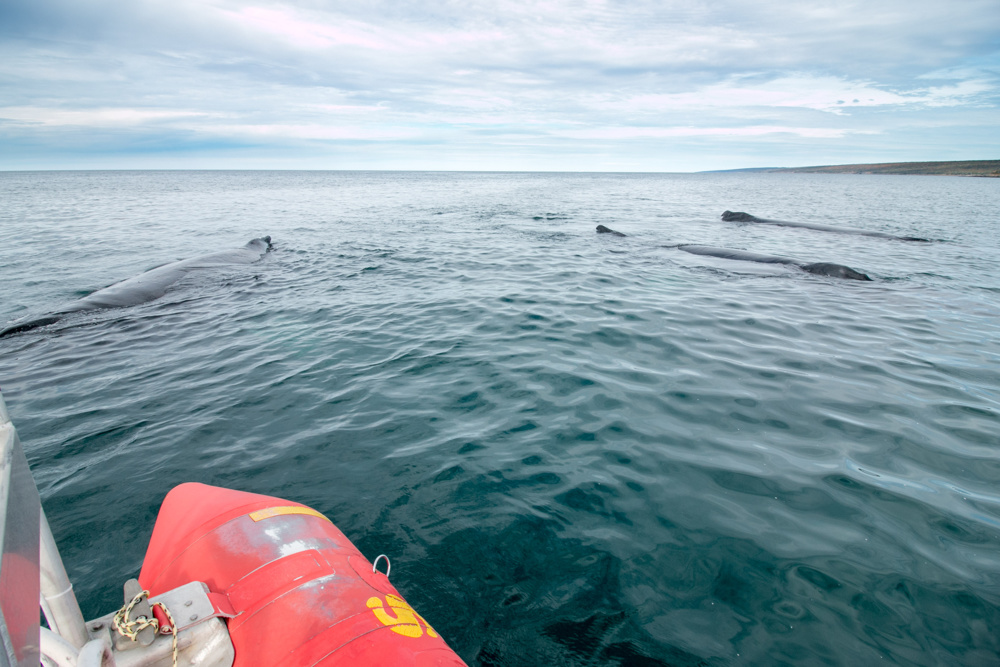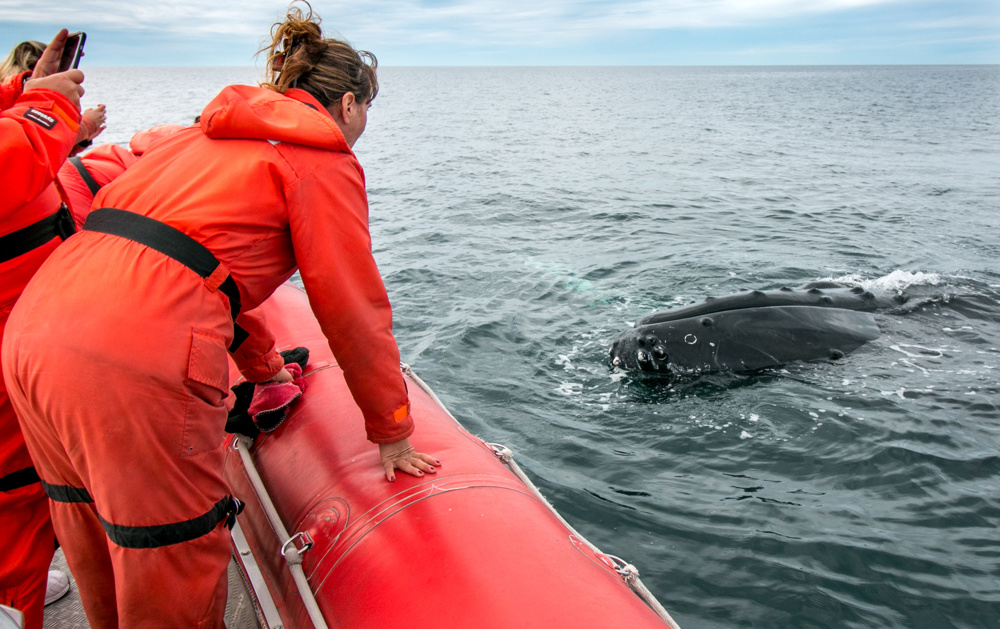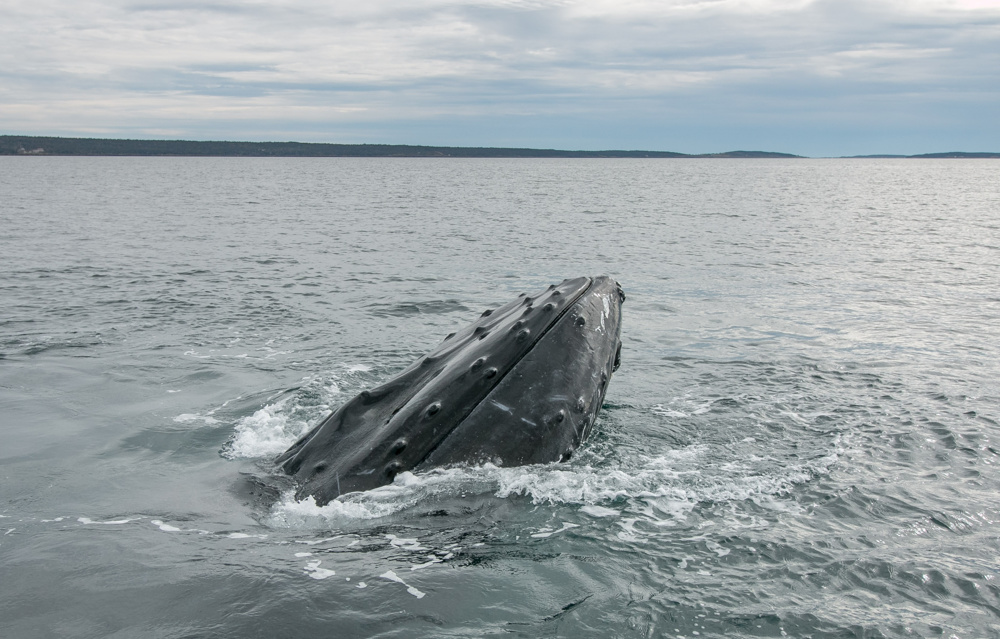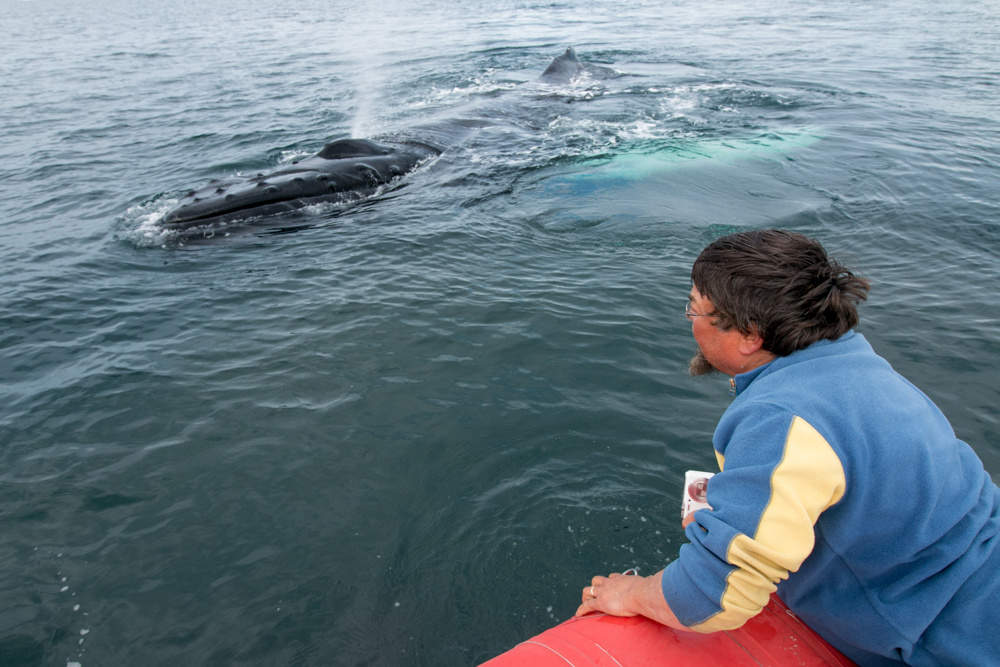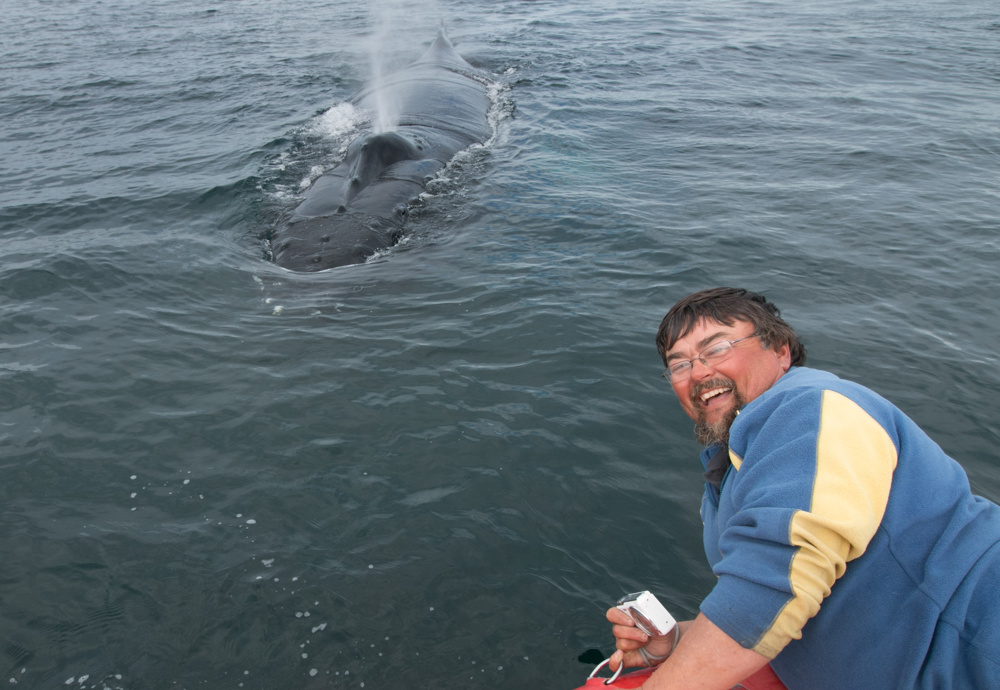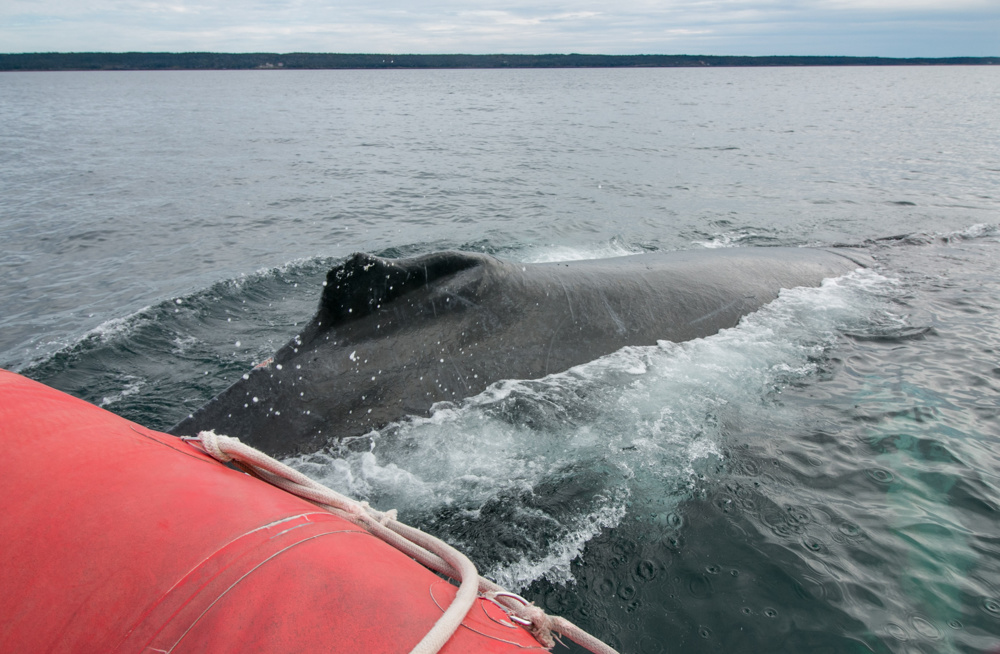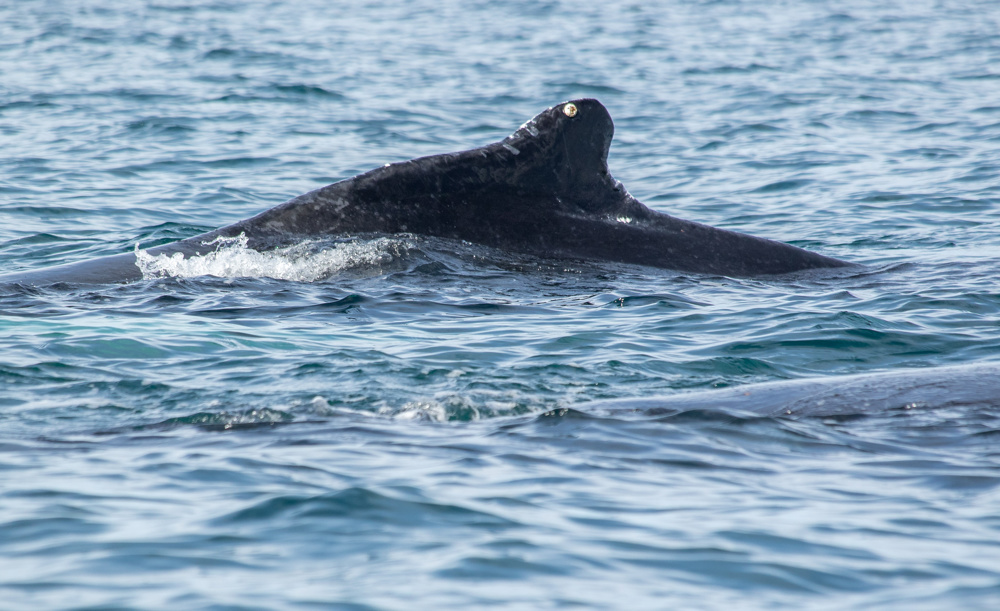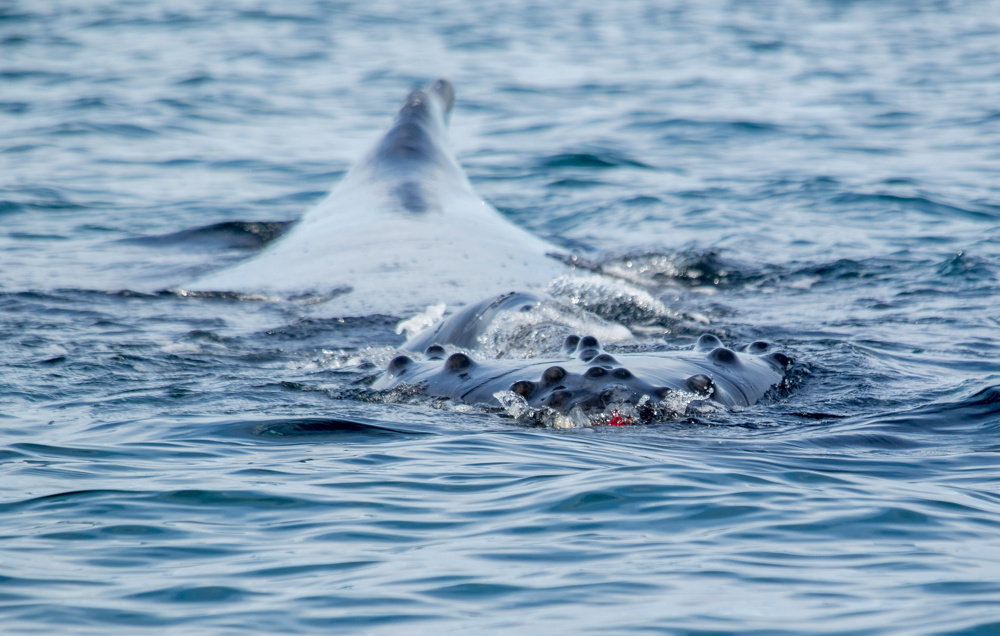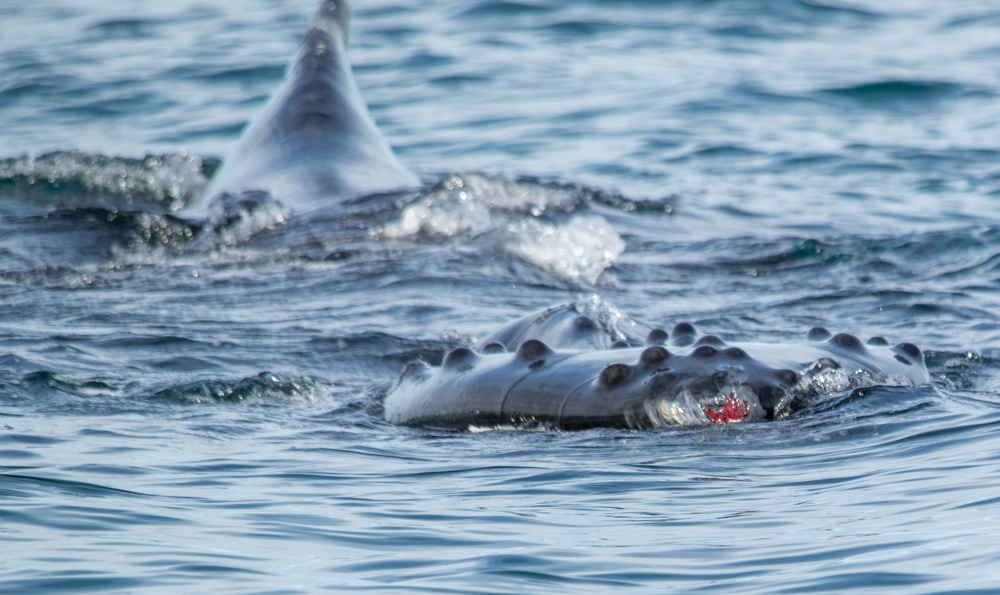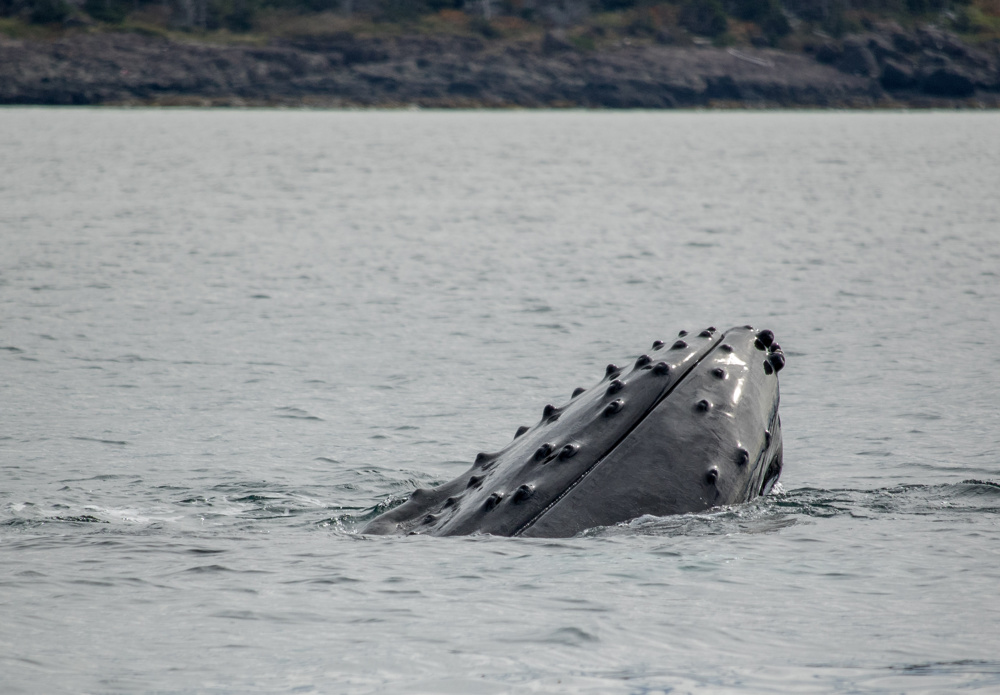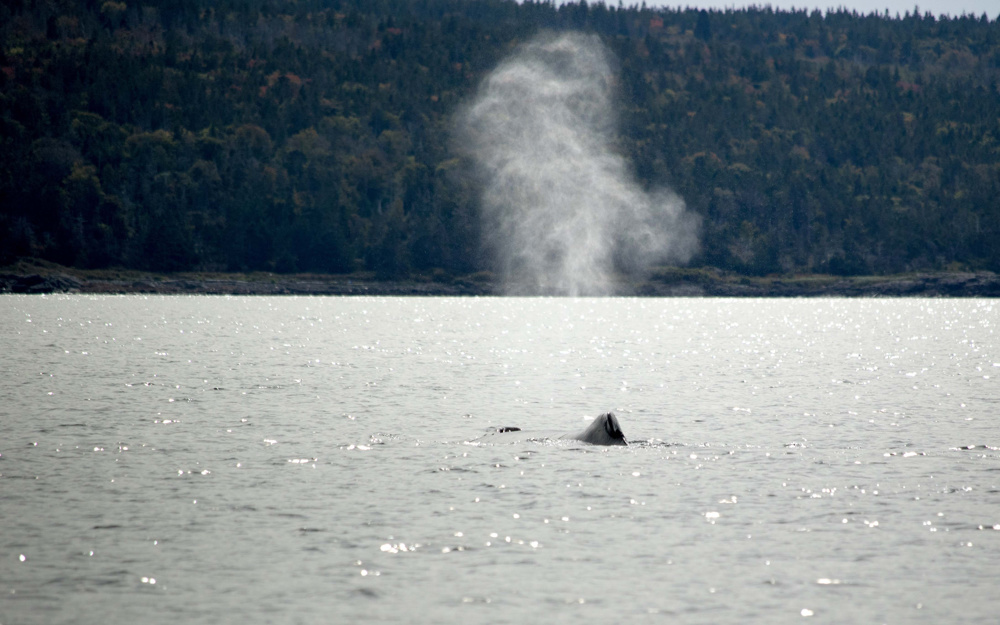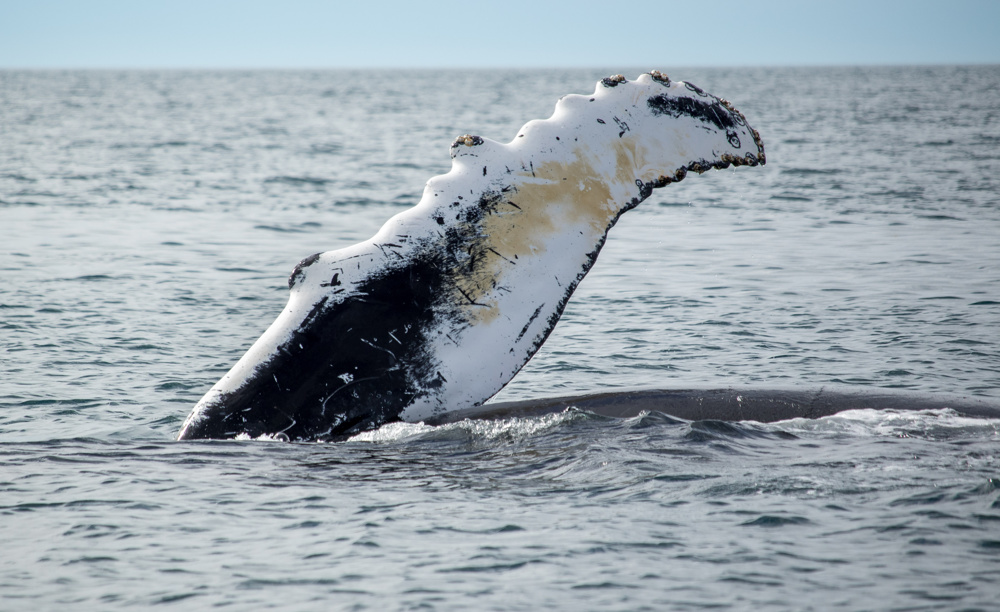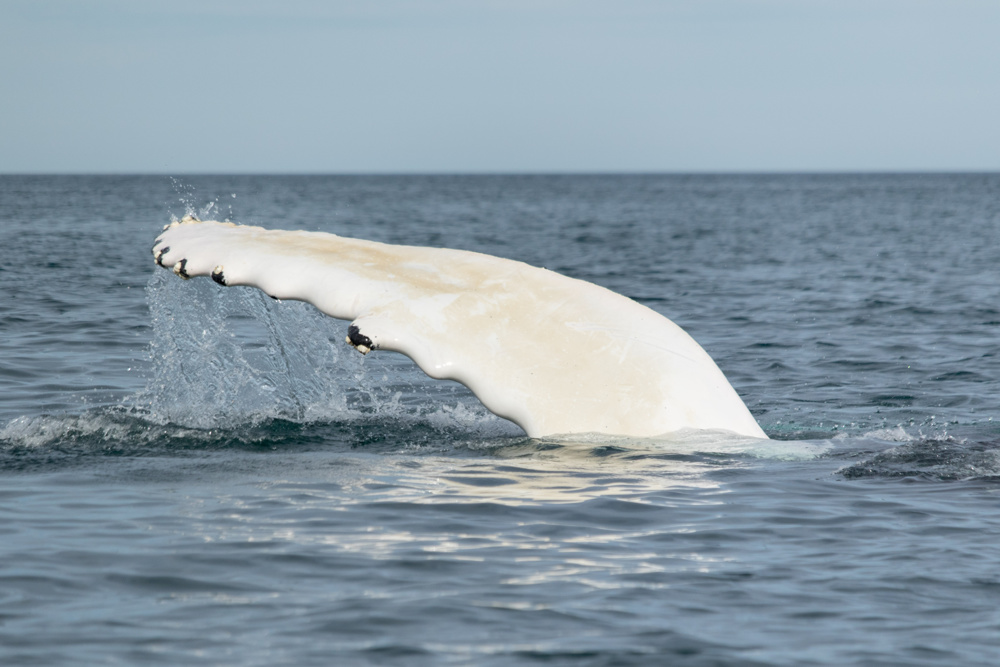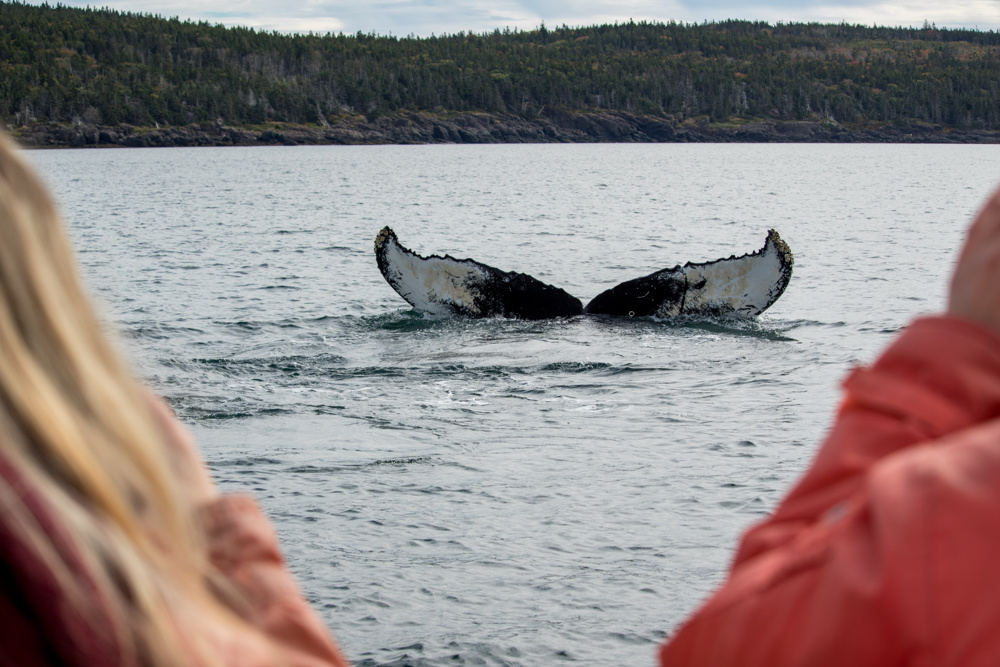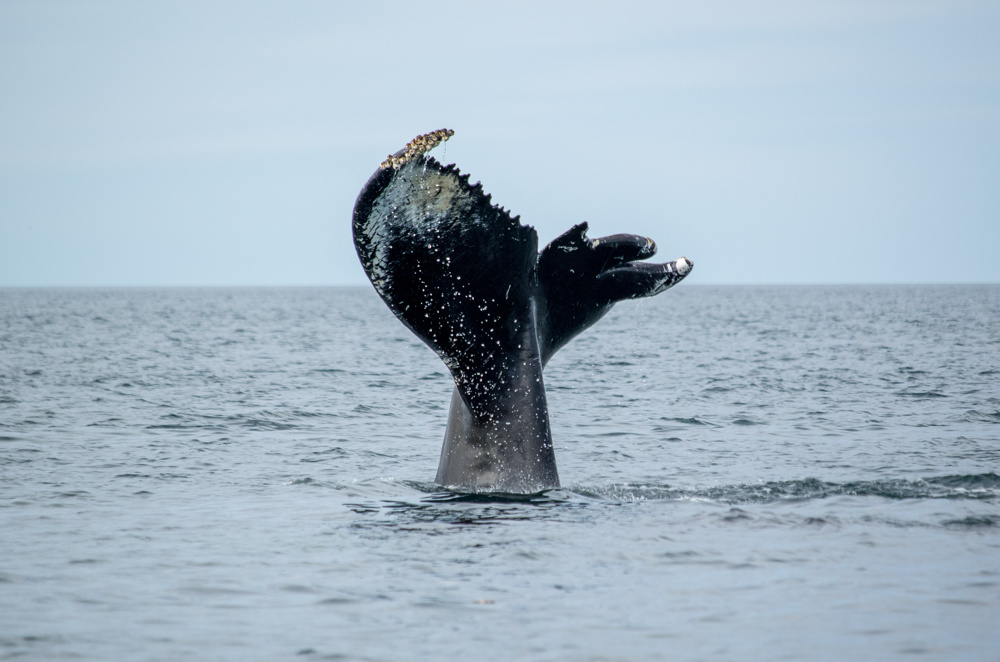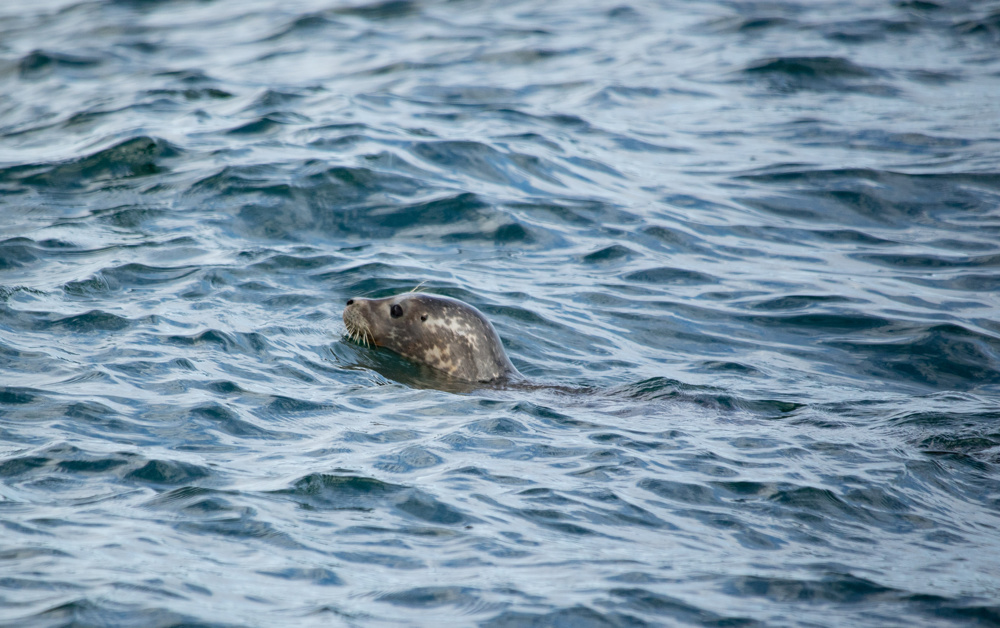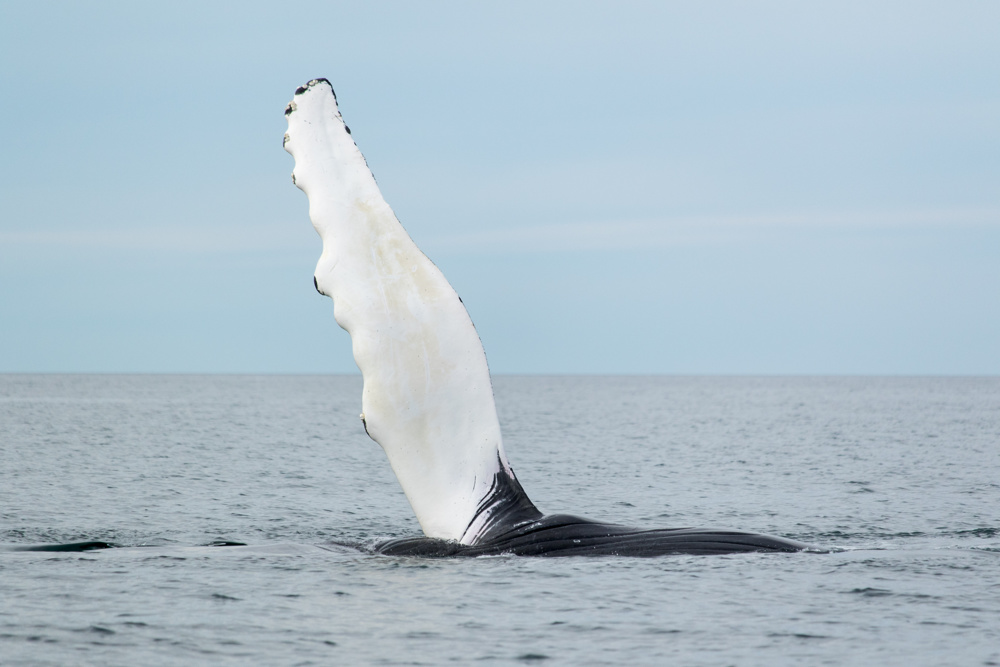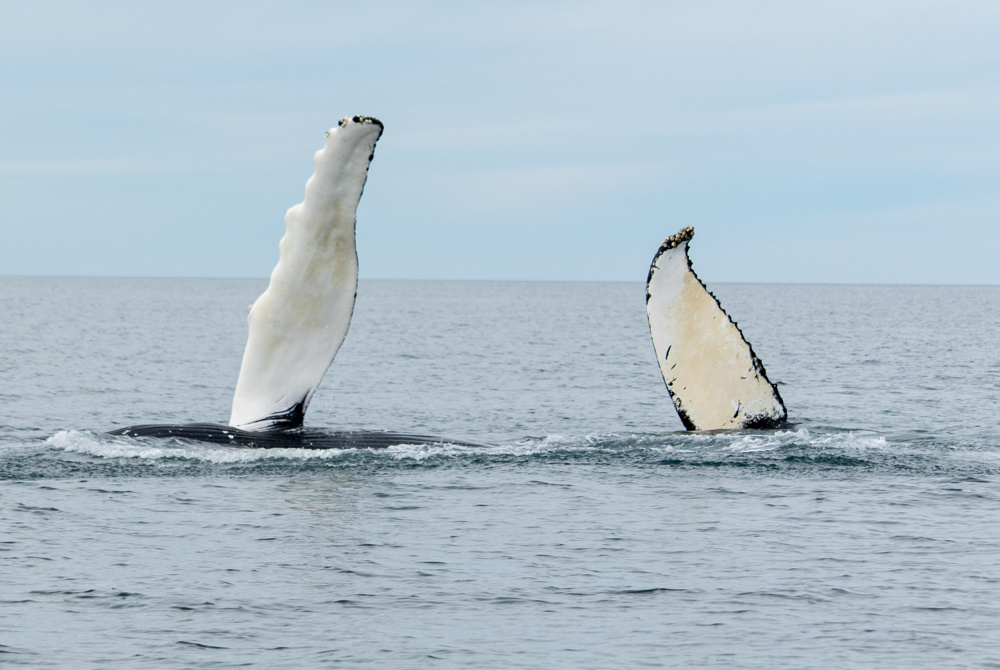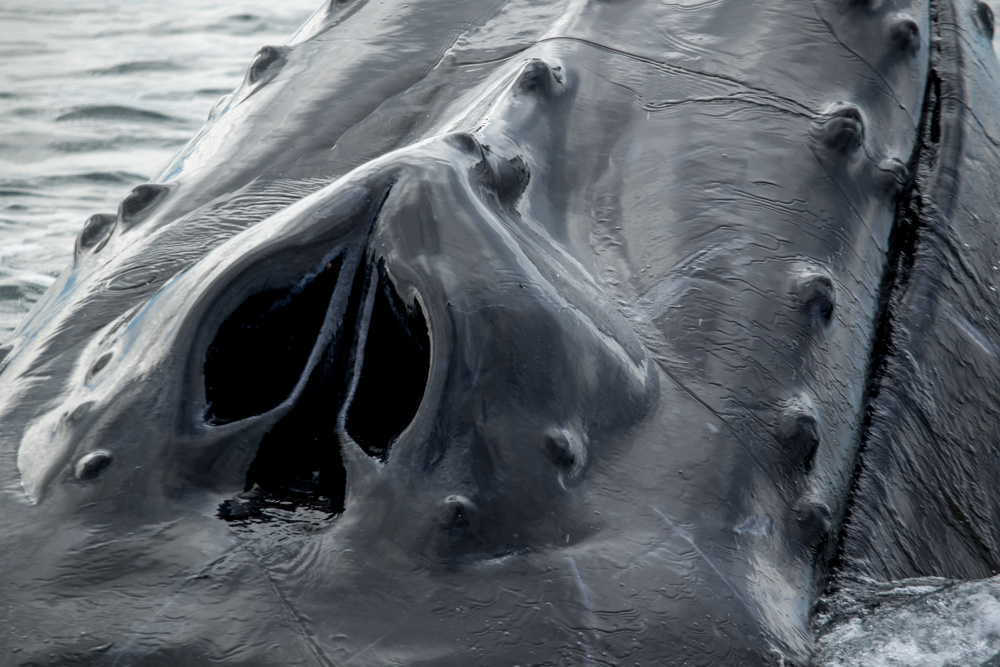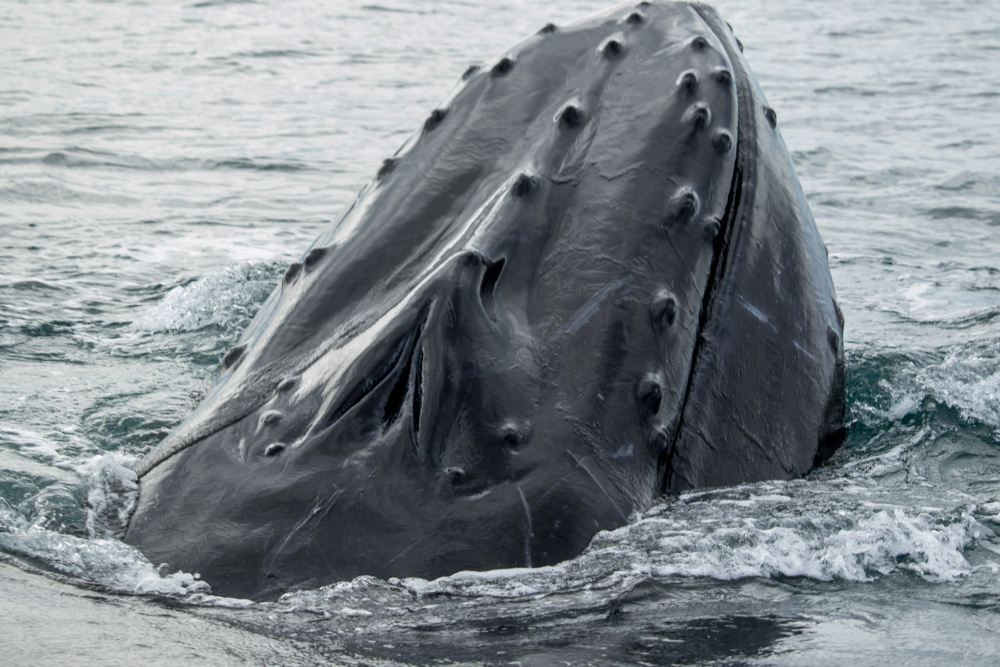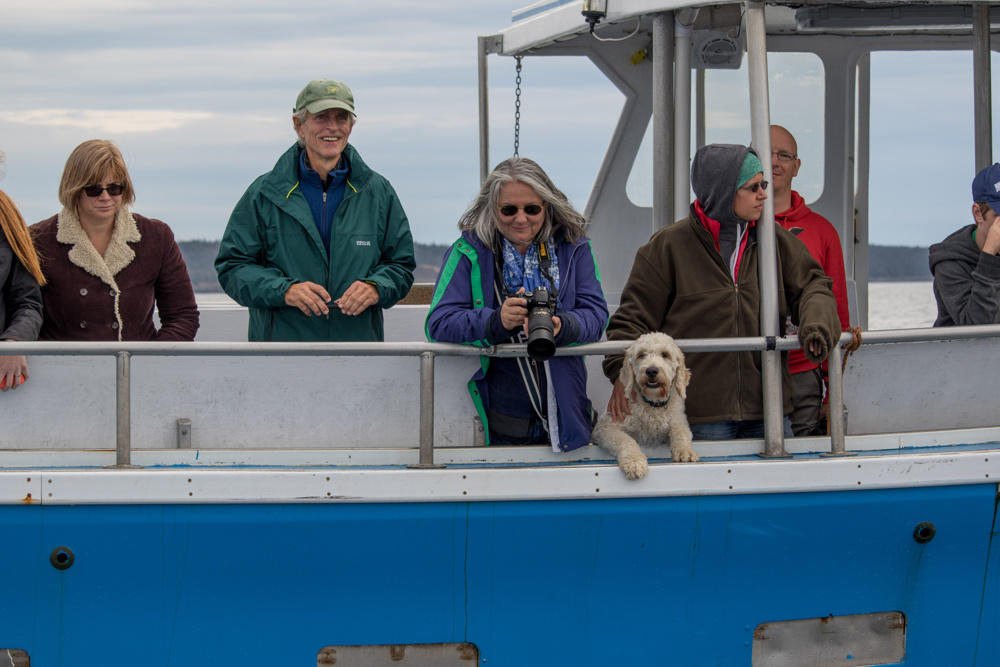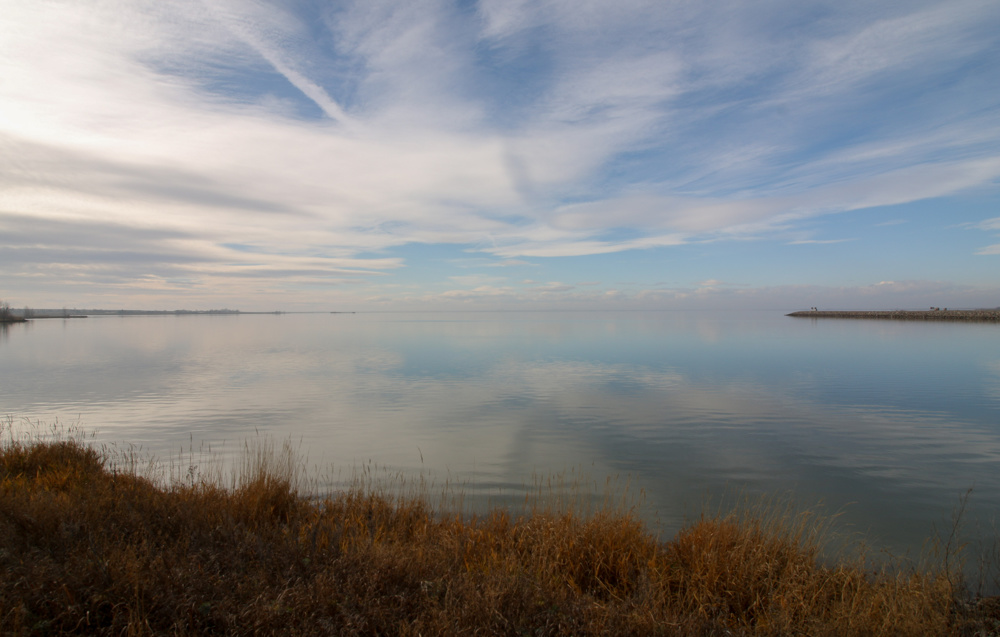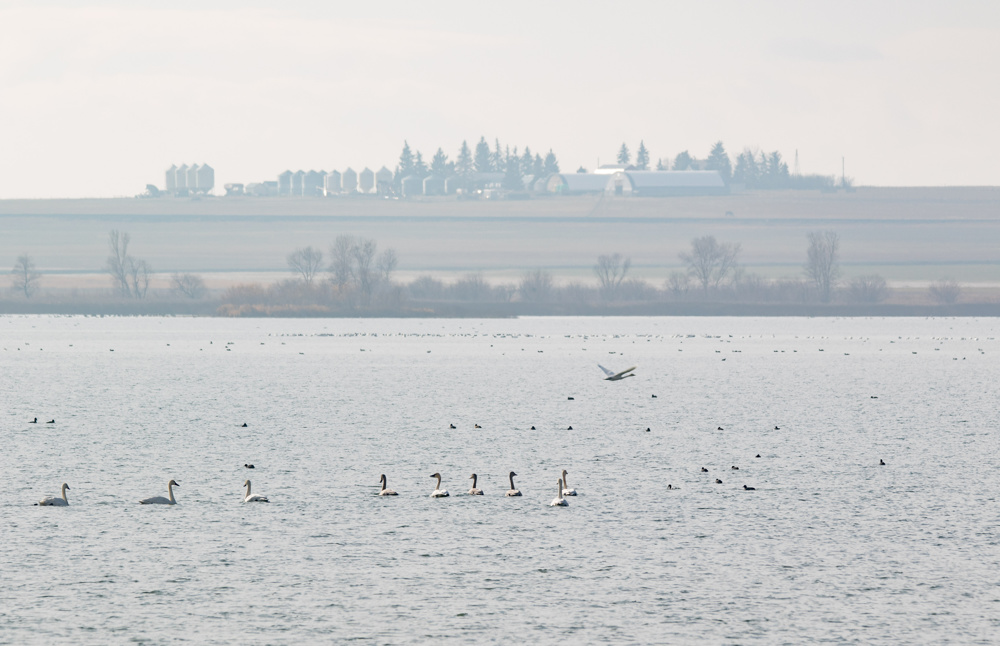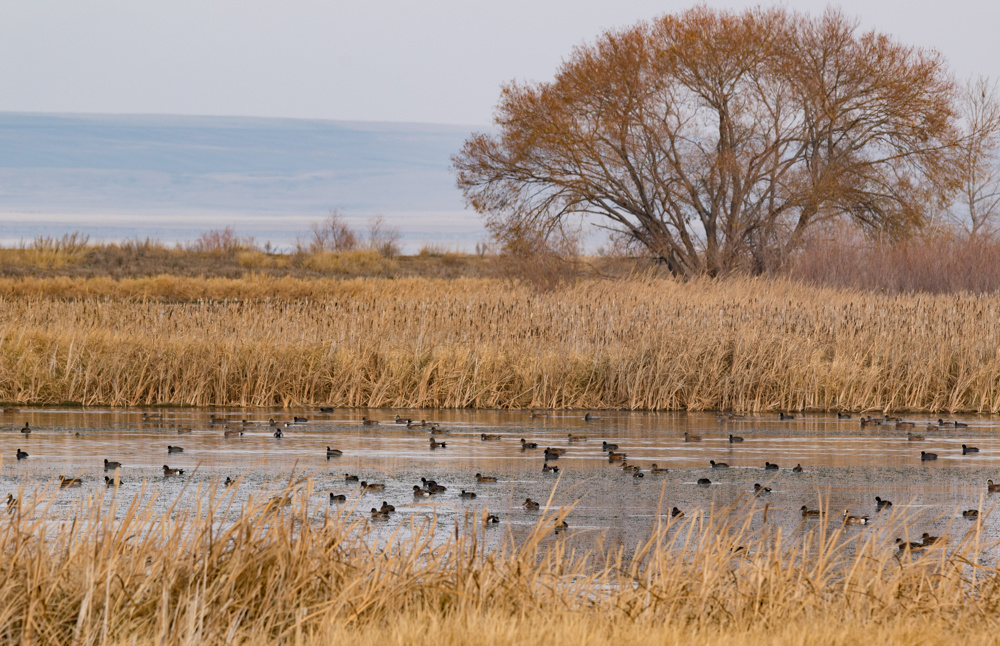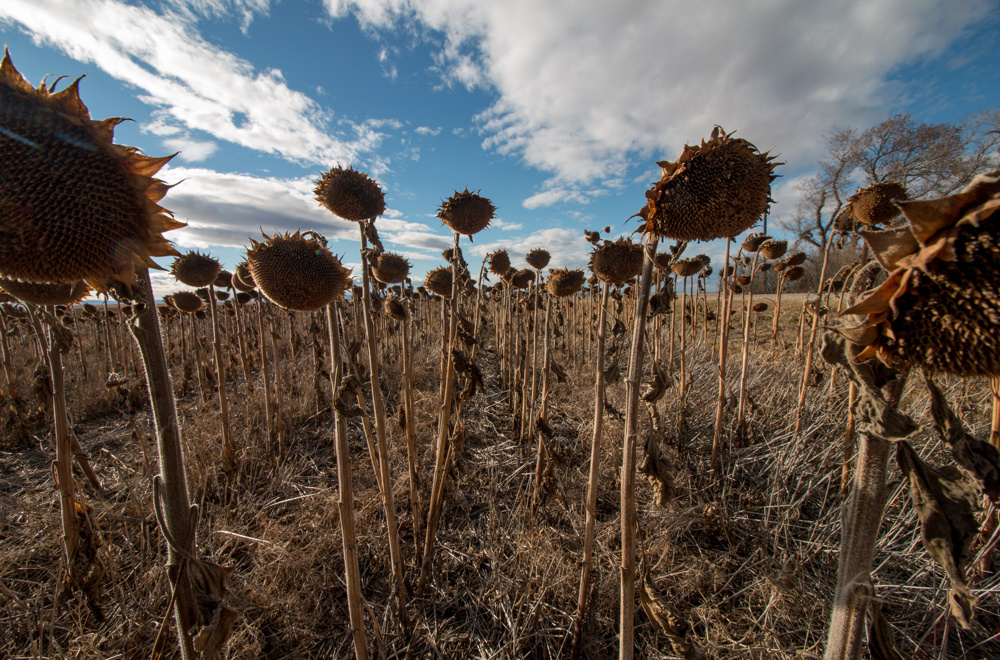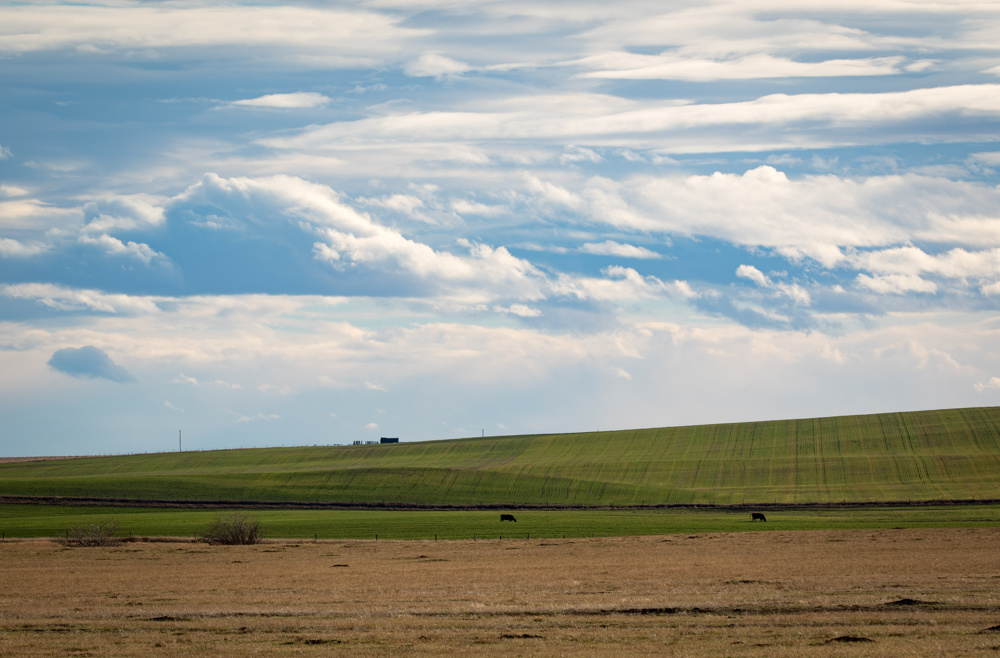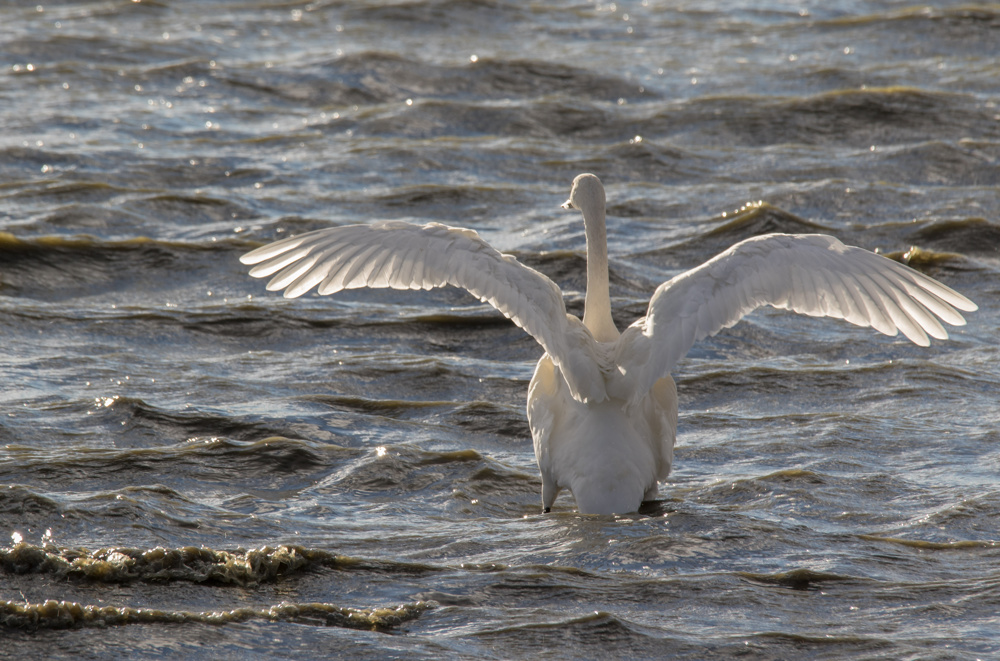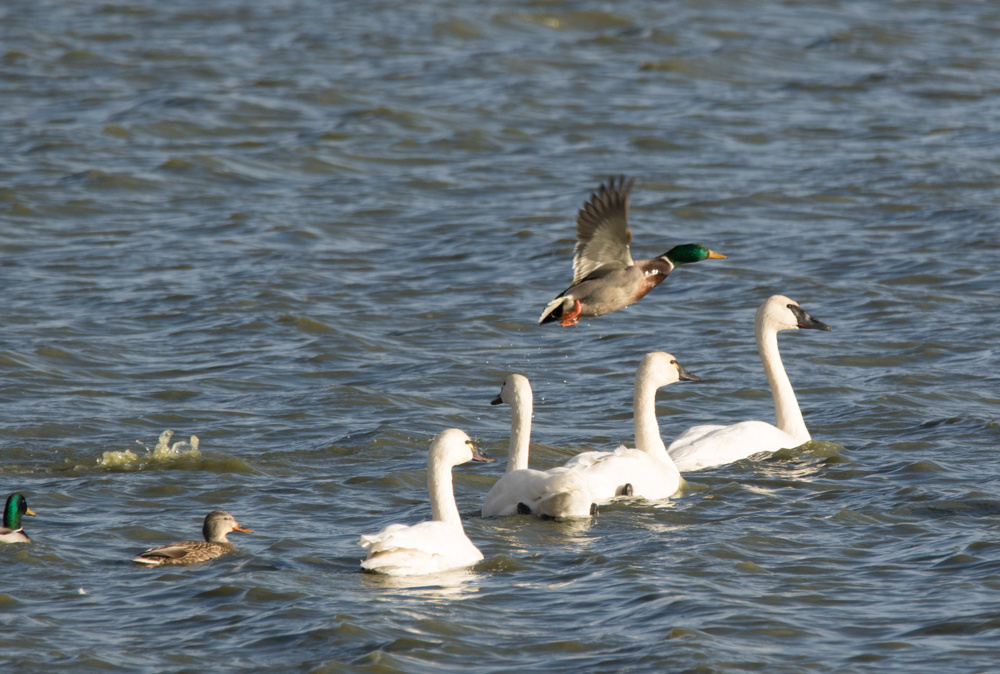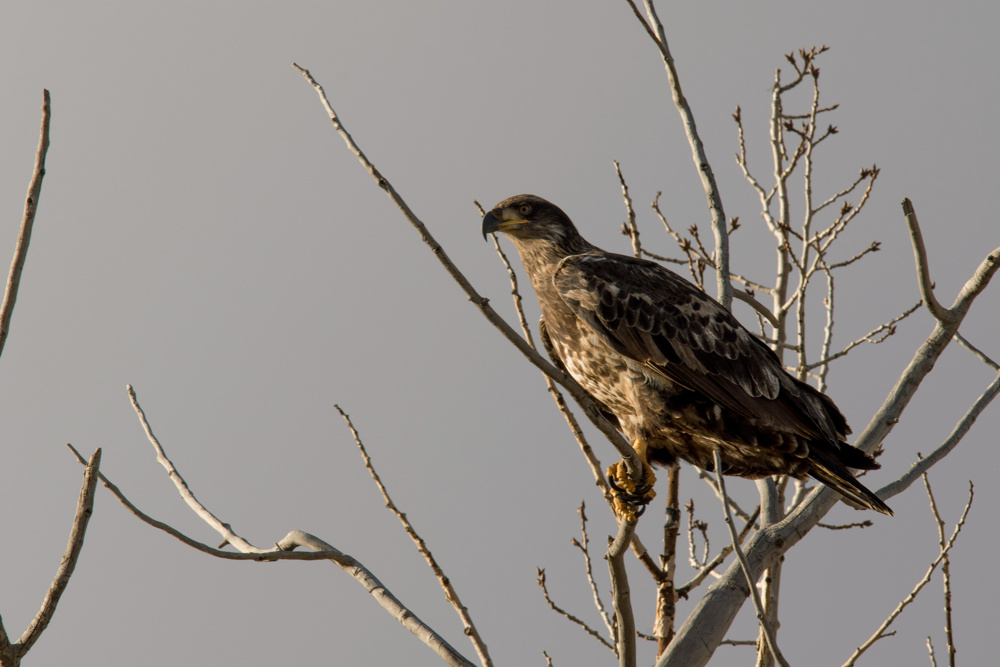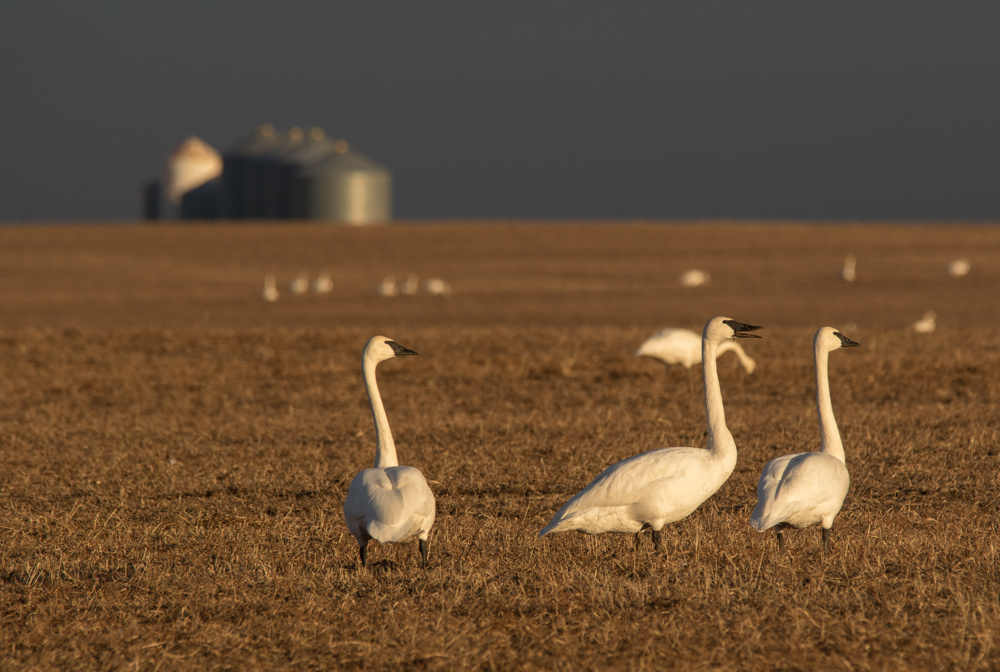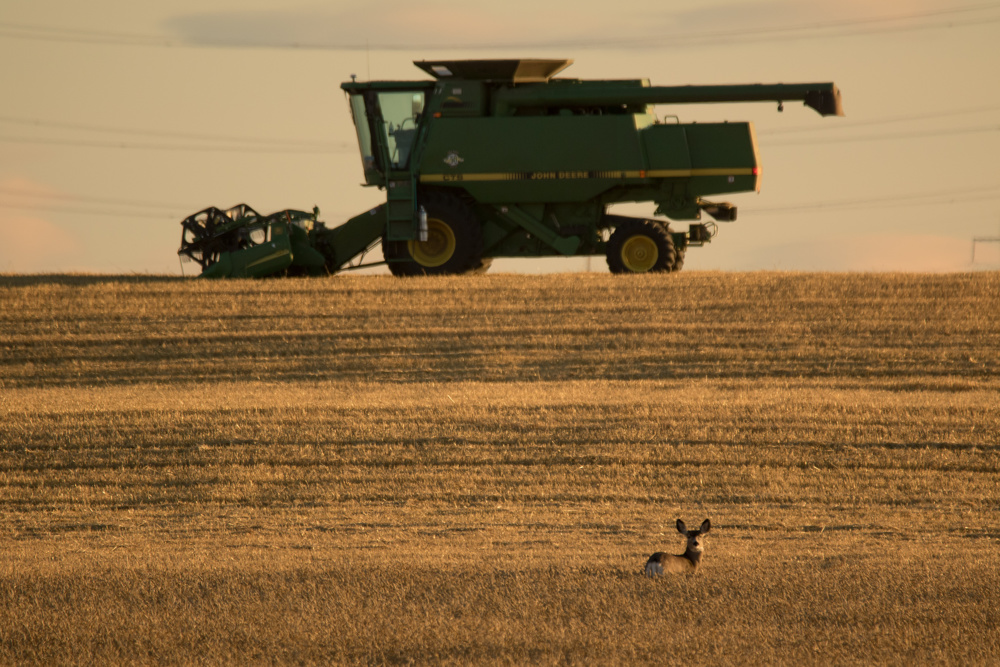If It's Foggy, It's Tuesday
Okay, I guess if it’s foggy, it must be Tuesday.
For the third time in the last month I headed out into a thick blanket of morning fog. Not that there was a choice, really. There was fog in every direction and no way to avoid it.
But this time, instead of just heading out blindly, I checked the weather forecast. It said that the fog would clear as I rolled east and the morning wore on. Partly cloudy skies by mid-day.
Blind in faith and nearly so in fog-shrouded vision, I lit out for Bassano and Crawling Valley.
You already know how it goes from here. Still foggy at Gleichen, frost and fog at the summit of Cluny hill. Slightly better visibility at Crowfoot. No visibility at all at Crawling Valley.
The only real difference this time was that it was cold enough for frost to form. Not that crystally, feathery frost, though, but mainly just a concretion of tiny white crystals, more like the coating on a KFC drumstick than a scattering of down from a burst pillow.
Still, it was kinda pretty. And I’ve always been a sucker for frost. So I kept rolling on into it instead of heading south where I knew the sun was shining. But maybe the third time would be the charm.
There was very little ice on Crawling Valley reservoir, not a surprise given how warm November has been. And there were birds there, too.
The big flocks of tundra swans and snow geese have moved on but there were plenty of mallards, Canada geese and coots. Family groups of tundra swans paddled around - usually the parents and a couple of nearly-grown cygnets - and harriers flew low over the frosty cattails and reeds along the shore.
The light was dull and turned everything shades of grey but there was just enough autumn tawniness to the cattails and the shoreline ryegrass to add a bit of colour. Even the occasional clumps of aspens sitting in damp spots on the sagebrush prairie offered a big of brightness, their trunks a couple of shades whiter than the frost that had formed on them.
I passed several birds as I drove on toward Gem. Pheasants crossed the road in front of me while shrikes flew around the thickets of buffaloberry. I saw snow buntings and horned larks. And one snowy owl that took off and disappeared into the mist - like all the other birds I’d seen - before I could shake loose the camera.
I did manage to find a lone mourning dove that bobbed its head at me from a perch in a cottonwood in a farmyard, though. Not sure how well equipped a delicate thing like that will be for the winter weather that’s eventually going to get here. It should have headed south a month ago.
I’d hoped to find antelope north of Gem on the wide swath of prairie that leads to the Red Deer River valley but they must have better places to be. So I headed down to the Finnegan Ferry to have a look.
I know it wouldn’t be in operation but the coulee that leads down to the river crossing is just so pretty. And even more so today. As I descended toward the river I dropped below the fog line. The reds of the willows and dossier dogwood shone in the soft light. Cactus, although winter desiccated, glowed with a solemn green.
The grass along the coulee sides was fawn-coloured, tawny, milk chocolate and plain old brown. The spring-fed creek running through the coulee sang along, the water splashing up onto the moss and bankside grass and coating it with splash ice and ice bells. I scooped up a handful of its icy waters to have a sip and it tasted of iron with a touch of sulphur.
I hadn’t seen them on the way down the coulee but on the way up I spotted first one and then two more mule deer bucks. They should be with their harems at this time of year but maybe they’d just been unlucky with love.
Or maybe their girls were up top and wandering in the fog and these guys were just having a boys getaway. Either way, no ladies.
There were more shrikes at the top of the coulee - man, they are hard to photograph - and a whole flock of doves up the road. I watched a tractor knocking down sunflower stalks in a field and got pictures of some of the still-standing ones coated in frost.
I started heading east now, circumnavigating Crawling Valley. I’d hoped there might be some more big birds on Wolf Lake but no luck there. And I saw another snowy owl sitting like a barely differentiated white lump in a frosty field. There were rough-legged hawks around, too, but they were easily spooked for some reason.
It wasn’t until I turned south from Crawling Valley that I could anything at all. And I heard them before I saw them.
The d Diet Coke and coffee I’d had for breakfast had worked their way through my system so I pulled over to, um, check the weather. And as I stepped from the truck I heard a chorus of honks.
There were a couple of hundred Canada geese on the ponds due east of Bassano, a noisy gathering of dark, noisy semi-silhouettes gathered on the ice along the open water near the middle. I figured they’d all take off as soon as I stopped but they held while I shot my pictures.
Pictures which I have to admit don’t have a lot in common with something that’s in focus. Hey, it’s hard to focus through fog.
By then I’d had enough of blundering around half-blind so I rolled back west again. And as I neared Cluny, the sky started to glow.
The fog was thinning, lifting, enough sun was getting through to start melting the frost. And then just north of Gleichen, the sun broke through. Glorious.
The fog wasn’t done yet, though. I cut west toward Namaka with the sun a silvery disc in the sky and stopped by Carseland as the disc turned from silver to gold. A soft mist persisted all the way back to the city.
But at least I could see. If only the forecast for Bassano had been right.
Oh well, there’s always next week. But if it’s foggy again, I’ll know it’s Tuesday.
In which case, it’ll be Wednesday when I’m on the road again.
Slomo Snow
Big flakes falling near Longview. Shot at 1080p 120fps on my iPhone 6s.
The snow was coming down heavily near Black Diamond.
I could see maybe four car-lengths in front of me and the wipers could barely keep the windshield clean. Under the tires, the road was a sloppy mess and the truck was having a bit of trouble tracking along.
Somewhere up ahead, up along the Sheep River, I knew that bighorn rams were butting heads. But the road was too slick, the snow coming down too thick. They’d have to wait for another day.
I turned south and headed toward Hartell.
It was still snowing in the Tongue Creek valley but not as hard. I was on the southern edge of the heaviest snowfall and overhead I could see bits of blue sky starting to poke through. Now it was just squalls.
I stopped to take some pictures of cattle that had waded into a slough and were chomping on the green still growing there but they were shy and sloshed out before I could get a shot. But then they stood there and stared at me - as cattle will do - while the snow sifted down around them.
Then the sifting slowed and a few minutes later, it stopped. Grey mist filled in the gaps. Across the ridge in the Highwood River valley I found a bald eagle sitting in a tree while a gang of ravens picked at a road-killed deer. The wind was calm. I could hear cattle off in the distance.
I might be making it sound kinda miserable but it was actually really pleasant. It was cool and grey, true, but it was also quite relaxing. I passed through Longview and headed south, the sky brightening as I drove along. By the time I reached Pekisko Creek, the sun was shining.
What little snow had fallen here had mostly melted and in the sunlight the fence line, the grass, the aspens and cottonwoods all glittered with water drops. There were ducks on the roadside ponds and a family of trumpeter swans flew by low to the ground. Cattle were clumped in groups out in the open fields.
Behind me I could see the snow line, a bank of dark clouds on the northern horizon. It looked like it had hit the big hill at Longview and snagged un the ridge unable to move any further. There were still clouds above me but they were clumped like the cattle in the pastures, groups of them here and there dark against the blue, some casting shadows on the land, others trailing curtains of snow.
I stopped to shoot one of those curtains by Stimson Creek.
Big feathery flakes were falling like down from an exploded pillow so I set up my phone to shoot in slow motion and let them fall around me. I could feel them landing on me, on my head and hands, and melting almost instantly. Magical.
The sun was shining just down the road, though, so I moved on and turned on Williams Coulee Road. Looking back from the crest where the road turns into the Porcupine Hills I could see my little snow storm sweeping along the ridge just south of the Bar U Ranch, a soft pigeon-blue broom sweeping across the brown hills.
The wind started up as I rolled down into the Mosquito Creek valley. There were still clouds and snow to the south, the mile-high ridges dark under their shadows, but the wind was shredding them, sending waves of them northward where they evaporated against the blue above me.
It was still clear here but off to the north where the cold front had stalled I could see clouds building higher and higher. A single white horse stood in a pasture with the sky churning behind it. A mule deer doe - the only deer I saw all day - looked up from feeding along the creek as a gust of wind swept down the valley.
I turned south and headed to the higher country.
It was much windier up here. I stopped to try for a picture of a golden eagle but it took off and was immediately swept away. A tractor loading round bales left a stream of loose straw trailing behind it in the wind as it picked up the hay.
The light, though, was superb.
The bright sun kicked speeding shadows across the valleys and hillsides as the clouds moved along and lit up the damp grass and green cover crops with a low-angle glow. I stopped to take a picture of a lone tree on a hilltop with a road leading up the ridge and every picture I took looked different as the cloud shadows shifted and flew.
I headed out through the magnificent slash of Williams Coulee and hit the wind again on the other side. There were horses bathed in sunlight with their manes and tails tousled by the gusts as they grazed along. A coyote bounced across the road in front of me like a tumbleweed, looking back over its shoulder before taking off like a shot. Snow seemed to fall from the blue sky sky but it was just the wind scattering the flakes falling a kilometre away.
I carried on westward and stopped again where the road rolls over the summit of the Porcupines.
Looking north I could see the clouds building even higher while to the west they were absolutely flying over the hills, The wind was coming straight out of the south and it must have gathered strength as it pushed up the Willow Creek and Beaver Creek valleys just beyond the ridge before dropping off toward Mosquito Creek below me to the north. The clouds were being torn to pieces.
But the day was nearly done. I turned around by Willow Springs and headed back toward the city, the sun nearly at the end of its short early-winter arc and about to dip behind the clouds over the mountains.
A short day but a dramatic one.
East to Nanton, north to High River, a flock of tundra swans in a white V flying past between them and the day was done.
Heavy snow, soft snow, sunshine, wind, white landscape right next to brown. Yet another lovely southern Alberta day.
Bank of dark clouds in front of me, I headed on home.
Sweet November
I really felt like walking over and snuggling up next to the moose.
She was lying in a comfortable-looking patch of willows and grass, her tiny eyes barely staying open as she looked back at me while I took her picture. The wind hadn’t come up yet and even now, just a couple of hours after sunrise, the temperature was already in the double digits.
I was poking around between Dogpound and Madden, taking advantage of the unseasonably warm weather to just cruise and see what I could see. I’d missed the sunrise - and it was a nice one - but the chinook arch sweeping overhead was diffusing the morning sun and bathing the landscape in nearly shadowless light.
It was easy to see that the day was going to get windy, There were already clouds shredding on the peaks to the west and the shadows cast from the lip of the arch were making dark streamersin the the dust in the air.
And there was lots of dust.
I’ve occasionally seen combines working this late in the season before, usually chewing up canola, but there were at least half a dozen of them working the fields between Cremona and Crossfield. Barley chaff and dry dust from the canola was nearly fog-like around some of the fields.
But the warm November air made it feel far less strange. The scent of the dust in the rising temperature made it feel more like mid-September than mid-November. It was a warmer, more pleasant day than we had during the entirety of the Calgary Stampede. Except for the bare trees, it could have been summer.
The wind was starting to pick up now, heavy gusts coming from the west. The arch above was separating into banks of lenticular clouds, oblongs that stretched and changed like blobs in a horizontal lava lamp.
I put up my little copter to take a few pictures of the bends where Dogpound Creek twisted through a pasture and just as I started to shoot the sun broke past the edge of the arch and flooded the ground below with light. Looking down at the screen with the video flowing back from the airborne camera, I could see the light moving quickly across the land. And I could feel it as it reached me, my black jacket rapidly going heat as the sun bore down on it.
I flew the copter back and rolled on hoping to find a combine to photograph from the air.
Finding one wasn’t a problem. The problem was flying.
Launching the copter near an empty field, I attempted to fly it low over some some swaths waiting to be picked up. It took off just fine but the wind was so strong that I could barely get it to move forward. Too scary. I brought it back and put it away.
Heading back toward Dogpound, I tried to find valleys that were a bit sheltered but the wind was so strong that it reached everywhere. Horses grazed in the scant shelter of the bare trees and the combines left streaks of dust churning off to the east like contrails from a jet. The wind was so strong that it was lifting the windrows of swathed grain and tossing them around the fields.
It was warm, though, nearly hot, the warmest November day I can remember. If not for the wind and low angle of the sun, it would have been as fine as any summer day. But the wind, especially, was wearying.
Stepping out of the truck I was buffeted and shoved around and stopping the truck to shoot from inside was nearly as bad, the wind shaking the it as much as it shook me. Tiring and tough. I was really starting to regret not walking over to nap with the moose.
Still, though, it was lovely day. But I had to get back to town for an appointment so I rolled southeast.
I woke next morning to an equally lovely day and thought, why waste it cleaning the house doing other decades-neglected chores. I headed out toward Dogpound again.
And promptly saw another moose. This one was a male, though, standing among some aspens and not looking nearly as snuggly as the female I’d seen the day before. It was a little cooler, too.
But the wind was much sweeter, just a slight breeze that carried the scents of cattle, grain dust and damp. The chinook arch still rolled overhead but its edge was a series of streamers, not the wind-rolled blows from the day before. The mountain peaks were clear.
I looked around for a combine to maybe fly over but I found none. They really must have worked hard the day before. the fields that had been wind-tossed windrows were now just stubble and there were piles of grain in several fields, the kernels harvested and now just waiting to be hauled away.
The sun made it past the edge of the arch and the land was bathed in bright light. There was barely a ripple on any of the sloughs and their surfaces mirrored the sky. Deer were everywhere.
I watched them walking through fields and nibbling on dry berries. I found one nice mulie buck and his harem of does near Madden, his antlers glinting in the soft sunlight. A dozen or so whitetails walked the greens at the golf course.
And just to the south of Madden I stopped at a place I’d stopped the day before.
A slope green with a cover crop stretched out to the west, mountain peaks rose on the horizon. A line of cattle grazed in the foreground. The day before it had looked nearly identical but the wind was so strong that it was nearly impossible to get a decent photo.
Now, though, it was nearly calm. The sun was warm. I could hear cattle mooing in the distance. A dog barked.
So relaxing. A bit strange in November but so nice that we were having a day like this.
All I needed now was a moose to snuggle up with.
Humpback whales in the Bay of Fundy
We had a great day back in late September hanging out with humpback whales right beside the little Zodiac we were bouncing around in. Here's some of the pictures!
Into The Fog - Again
The fog was thick by Big Hill Springs, thicker by Madden.
I could see maybe four car-lengths in front of me, the line of hills just to the east of Big Hill Springs obscured in the heavy mist. The Madden golf course to the west of the road was completely invisible.
I was headed north to nowhere in particular, just aiming into the mist and …
Okay, hang on a second. This is starting to sound mighty familiar.
A week ago I’d been heading out into pretty much the same thing. The fog was thick in the city and thicker the further I got beyond the limits. The only real difference was this time I was headed north instead of east.
But the results were the same. Pretty tough to shoot pictures of things you can’t see.
So just north of Madden I turned and headed for Airdrie. I didn’t know what I’d be able to see over that way either but there wasn’t much point in continuing on my present trajectory.
And then, just as I approached Highway 2, I had one of those head-slapper moments and pulled over to the side of the road. Still surrounded by fog, I fished my phone out of the detritus on the floor of my truck and hit the home button.
There I saw glowing at me an icon, blue with a little sunburst peeking out from behind a cloud. I tapped it and it sprang to life.
Before me unfurled a list that I had compiled over the years of places I was interested in, places I’d been. And for each of those places it showed the current weather conditions.
Irkutsk, Istanbul and Buenos Aires were a little beyond the hours of daylight I had left. But Vulcan wasn’t. I tapped on the name.
It was still foggy all the way there but an hour and a bit later I rolled over a rise and saw the town in front of me in the rapidly thinning, silvery mist. A line of clouds rose into a soft blue sky. The sun was peeking out from behind one of them, just like the app said.
The fog was thin by Champion, thinner at Carmangay. By Barons it was all but gone.
It was still a little misty, though, at Keho Lake and the swans that were gathered there swam across waters that shimmered with silver. The shallow west end of the lake was full of the big white birds, tundra swans stopped here on their way south. Their chirps and peeps carried through the nearly-still air, mingling with the laughs of mallards and barks of coots and trucks passing on the highway close by.
The southern shores held flocks of widgeon, teal and pintails. Harriers hunted along the edges while a bald eagle flew by overhead. There were fishermen at the east end where the irrigation canal exits the lake. The water was like a mirror, the horizon blending perfectly into the sky.
It was warm here, too, and the air smelled almost spring-like. It must have rained or snowed some time in the last few days as the roads were muddy and puddles sat in the low spots but the sun was pushing a lot of radiant heat through the clouds and the thin mist that still lingered.
In fact, it was fairly foggy not far to the east. Picture Butte and Diamond City were both obscured. But the valley between Coalhurst and Nobleford was clear.
And green.
This truly is the banana belt of Alberta, hot in the summer, milder than most places in the winter. With irrigation you can grow pretty much anything here. That’s why on the first day of November I found bright green grass and alfalfa, sugar beets with their tops still crisp and green and volunteer mustard still covered with yellow blossoms filling the fields.
It’s not like this every year, of course. November is a particularly nasty month. But on this day with the fog burned off and a freshening chinook wind blowing in from the west, man, what a stunning place to be.
I rolled on west and north and stopped to check out a sunflower field I’d been watching since springtime and found that all the plants were still standing and waiting to be harvested. They were brown and dried out - and a lovely colour against the blue sky - and they rattled in the wind.
A wind that was increasing in velocity by the minute.
Not far from the sunflowers I found cattle grazing on a patch of bright green grain - winter wheat, maybe or some other cover crop - and hung my big lens out the window. The camera shook in the breeze and gusts rocked the truck.
At a slough close by I found more swans swimming and flexing their wings as grey waves crashed around them. Turning their big bodies into the wind they were aloft in just a few sweeps off their wings and as they landed again at the far end of the slough they hung in the air like gigantic white hummingbirds as they settle back on the water.
The day was nearly done by now and I headed north again but the further I went, the lighter the wind became. By Brant it was nearly calm and over by Blackie I found a thousand or so more swans.
They evening light set them aglow against the pea field they were feeding in, a bright beluga white against the brown of the land. They’d flown here from nearby Frank Lake, one of the best places around to see birds of any kind, and they fed on spilled peas, plant roots and anything else they could glean, pretty much oblivious to my presence.
Just like back at Keho Lake, their peeps and chirps filled the air, air so still that I could hear their wingbeats as groups of them passed overhead.
The mountains to the west were nearly obscured by cloud while off to the north I could see that big patches of fog still lingered, the last light of day setting their top edges aglow.
But here all was beauty, the sights and sounds of a late-fall southern Alberta day washing over me. If only I’d come this way in the first place.
Yeah, I could have figured things out a bit better before I left the house but where’s the adventure in that? And besides, you don’t need a weather app to know which way the wind blows.
Sun gone, swans flying back to roost, I headed on home.



